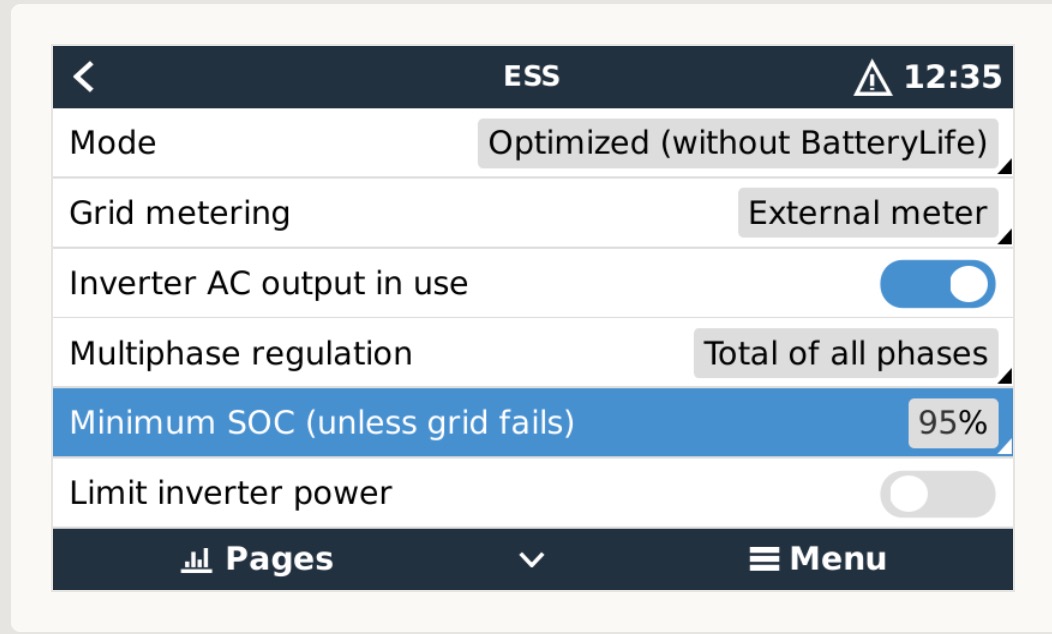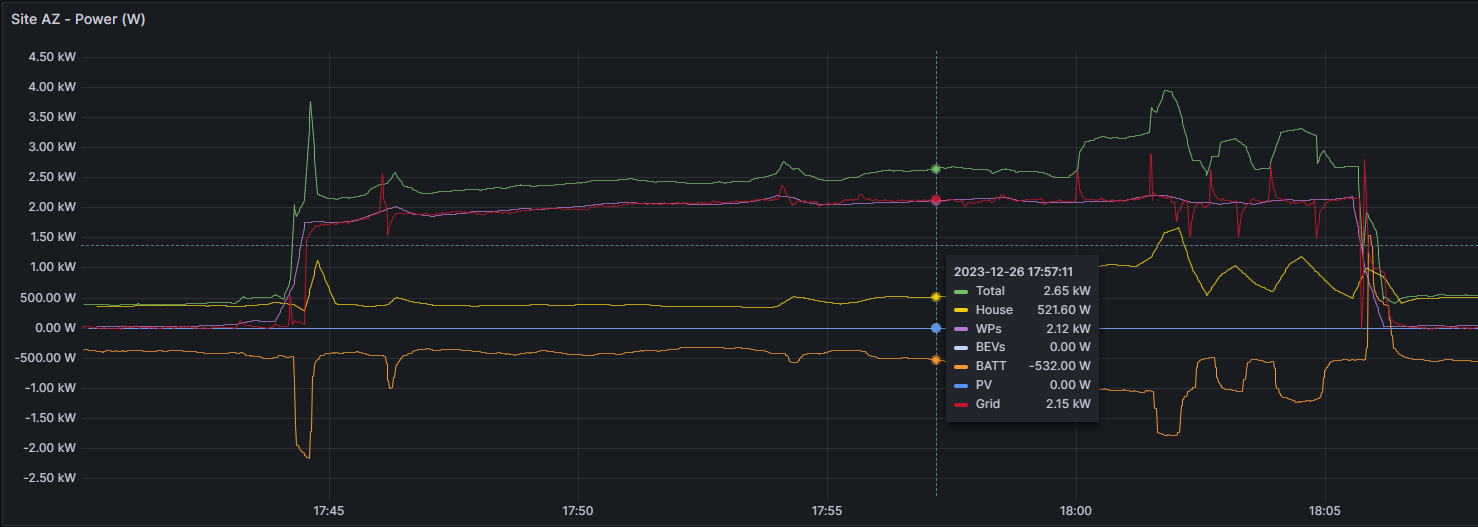Hi Folks,
during winter season, daily PV yield is not sufficient to fully recharge the batteries, especialy when direct consumption is also part of the usage.
My DSO does allow PV feed-in but does not allow chargeing from grid.
Using battery life alone, it would take weeks until a SoC of 100% can be reached, because discharging would still be allowed.
I'd rather find a solution to use almost all (and only) PV for chargeing, as well as prevent discharging until a SOC of 100% has been reached.
What would be the best option, given that I have Node-Red and the Cerbo with activated mqtt at hand?
My first guess is, to set the grid-setpoint to the value of the actual grid-consumption (so direct usage of PV will not take place, as all PV will be used for chargeing the batteries) .... do this until SOC of 100% has been reached, then return to a standard grid setpoint.
When minimum SOC has been reached, restart that procedure.



